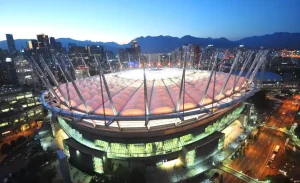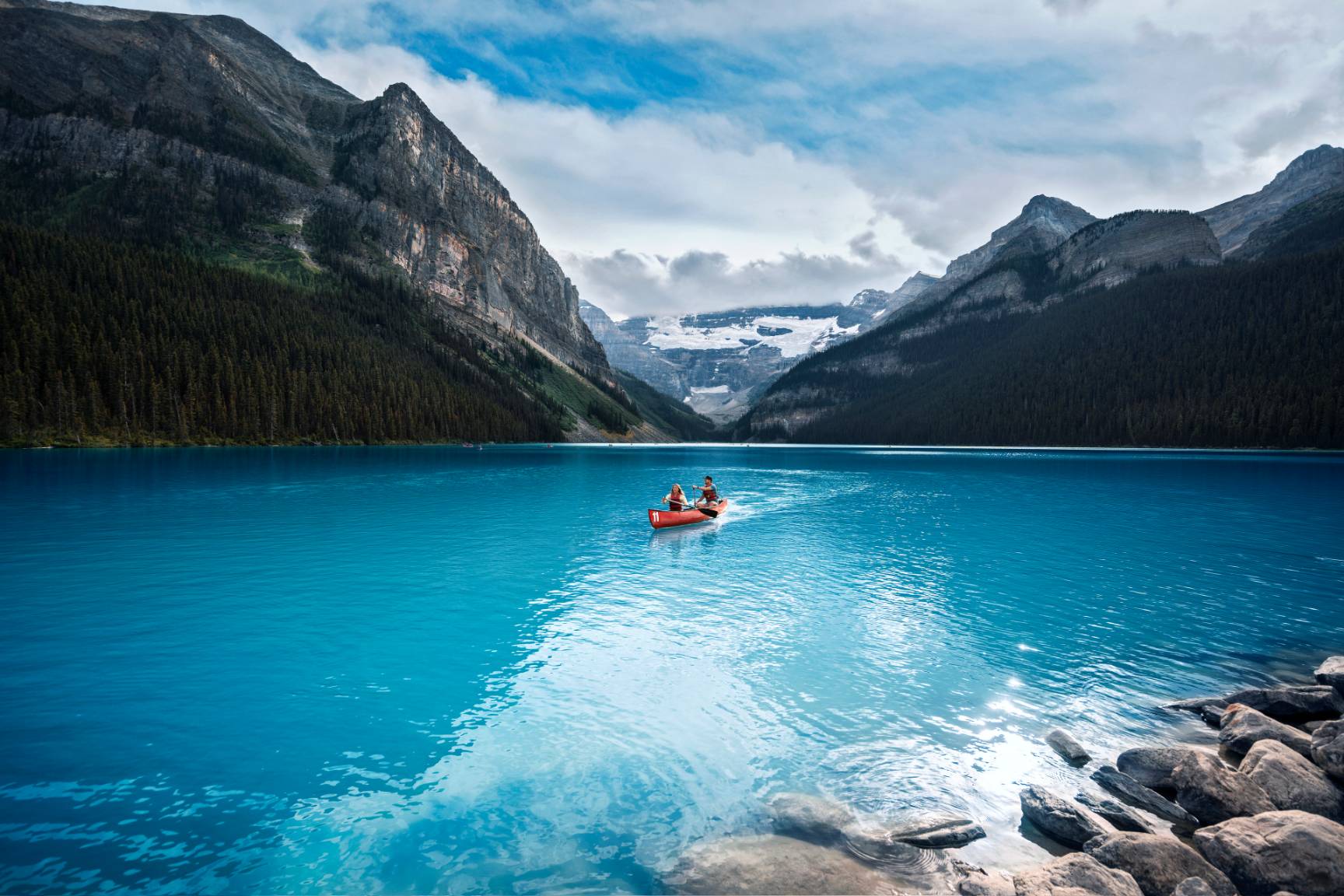Yes, Kamloops is worth visiting for its outdoor activities, unique desert-like landscapes, growing wine scene, and relaxed small-city charm.
The Ultimate British Columbia Travel Guide
Embark on a once-in-a-lifetime journey through the diverse topography of British Columbia, from the vibrant coastal city of Vancouver to the alpine village of Whistler high on the mountain, and to the primeval majesty of Kamloops far into the interior.
Each destination offers a unique blend of outdoor adventure, natural beauty, and cultural heritage. From Vancouver’s urban energy to Kamloops’ sun-kissed valleys and Whistler’s mountain resort, visitors are in for a rich diversity of experience they won’t forget.
This guide explores what makes each stop special, with tips on must-see attractions, exciting activities, and highlights to enjoy throughout your journey across British Columbia.
Vancouver
Vancouver is one of Canada’s most exciting cities, known for its stunning location where the mountains meet the ocean. Visitors can explore Stanley Park’s famous seawall, browse the shops and food markets at Granville Island, or enjoy panoramic views from the Capilano Suspension Bridge and Grouse Mountain.
The city offers a unique mix of outdoor adventure and vibrant urban life, with diverse neighborhoods, world-class restaurants, and a mild climate that makes it a great place to visit year-round.
Whether you’re beginning a journey into the Canadian Rockies or simply looking for a memorable city break, Vancouver is a destination that combines nature, culture, and adventure in one place.
Vancouver Day Tours & Trips
Vancouver offers a variety of fully guided day tours and trips that highlight the city’s natural beauty and attractions. A popular option is the “Grouse Mountain + Capilano Suspension Bridge Park Tour,” which combines two of the city’s most famous destinations into a single, 6.5-hour experience.
The tour includes hotel pickup and a driver-guided trip to the Vancouver North Shore, where guests receive admission to both the Capilano Suspension Bridge Park and the Grouse Mountain Skyride Gondola. Visitors can walk the Capilano Suspension Bridge, see a refuge for endangered grizzly bears, and learn about the salmon life cycle at the Capilano River Hatchery, all while being guided by a knowledgeable driver who shares insights into Vancouver’s natural history.
Vancouver - Top Attractions
Vancouver is a vibrant coastal city that attracts a lot of tourists from around the world. Even though there are lot of places and attractions, here are the top things you shouldn’t miss while in Vancouver.
Stanley Park
Vancouver’s most famous park with a scenic seawall, beaches, gardens, and towering cedars — perfect for walking, cycling, and photography.
Capilano Suspension Bridge
A thrilling 137m suspension bridge, treetop walkways, and cliffside adventures offering unforgettable views of the forest and river below.
Granville Island
A lively cultural hub with artisan shops, galleries, and the bustling Public Market—ideal for foodies and craft lovers.
Grouse Mountain
Ride the Skyride gondola for panoramic city and mountain views, outdoor activities, and seasonal events like skiing and summer hiking.
Vancouver Aquarium
A family-friendly attraction featuring marine life exhibits, conservation programs, and interactive educational displays.
Gastown
Vancouver’s oldest neighborhood with cobblestone streets, boutique shops, great dining, and the famous Steam Clock.
Cultural & Culinary Highlights of Vancouver
Vancouver is one of the most multicultural cities in Canada, and its diversity shines through in both its cultural attractions and incredible food scene. Vancouver’s cultural landscape is rich with museums, galleries, and festivals. Visitors can explore the Museum of Anthropology at UBC and the Vancouver Art Gallery, which showcases stunning Indigenous art, local history, and international exhibitions.
The city is famous for its fresh seafood, especially Pacific salmon and sushi. For food lovers, exploring diverse neighborhoods like Chinatown for authentic dim sum and other Chinese delicacies, or Commercial Drive (known as “The Drive”) for its Italian and Vietnamese eateries is a must. Foodies can sample local flavors at the Granville Island Public Market, enjoy fine dining with ocean views, or try street food from around the world.
With its mix of cultures, Vancouver offers everything from authentic Asian cuisine to innovative West Coast fusion, making it a must-visit for travelers who love to eat and explore.
Activities in Vancouver
Vancouver is a city where outdoor adventure and urban experiences come together, offering something for every type of traveler. Whether you enjoy exploring nature, sightseeing, or discovering local culture, there’s no shortage of activities to fill your days.
- Explore Stanley Park – Walk, bike, or take a horse-drawn carriage around the famous seawall and enjoy beaches, gardens, and wildlife.
- Visit Capilano Suspension Bridge Park – Experience treetop adventures, cliffwalks, and breathtaking forest scenery.
- Ride the Grouse Mountain Skyride – Take the gondola up for panoramic views, hiking trails, skiing in winter, and wildlife encounters.
- Discover Granville Island – Browse artisan shops, sample local treats at the Public Market, and enjoy live performances.
- Enjoy City Sightseeing – Wander through historic Gastown, shop on Robson Street, or explore the vibrant Chinatown district.
- Get on the Water – Try kayaking, paddleboarding, or a scenic harbor cruise for a new perspective of the city.
With its mix of outdoor recreation and city attractions, Vancouver is a destination where you can hike a mountain trail in the morning and enjoy world-class dining in the evening.
Vancouver Tours: FAQs
What is the best time to visit Vancouver?
The best time to visit Vancouver is from May to September when the weather is mild and perfect for outdoor activities like biking around Stanley Park or taking day trips to Whistler or Victoria. Winter is also popular for skiing in nearby resorts.
How many days do you need in Vancouver?
Most visitors spend 2–3 days in Vancouver to see highlights like Stanley Park, Capilano Suspension Bridge, Granville Island, and Grouse Mountain. If you plan day trips to Whistler, Victoria, or wine country, consider 4–5 days.
Is Vancouver expensive to visit?
Yes, Vancouver is considered one of Canada’s more expensive cities. Accommodation, dining, and attractions can add up, but there are plenty of free or budget-friendly activities such as exploring parks, walking the seawall, or visiting local neighborhoods.
Can I visit Banff from Vancouver?
Yes! You can travel from Vancouver to Banff by coach tour, Rocky Mountaineer train, or a self-drive road trip. It’s one of the most scenic routes in Canada, with stops in Kamloops, Revelstoke, and Lake Louise along the way.
Whistler
Just a short and scenic drive north of Vancouver along the Sea-to-Sky Highway, Whistler is one of Canada’s most famous year-round destinations. Best known as a world-class ski resort and host of the 2010 Winter Olympics, Whistler offers far more than winter sports. In summer, visitors can enjoy hiking, mountain biking, and the breathtaking Peak 2 Peak Gondola, which connects Whistler and Blackcomb mountains.
At the heart of it all is Whistler Village, a lively pedestrian area filled with shops, restaurants, and après-ski patios. Whether you’re seeking adventure in the mountains or relaxation in a stunning alpine setting, Whistler is a must-visit stop on any trip through British Columbia.
Village Life In Whistler
At the heart of it all is Whistler Village, a pedestrian-only hub filled with restaurants, cafés, shops, and après-ski bars. Whether you’re looking for fine dining, casual eateries, or lively nightlife, the village offers something for everyone in a charming alpine setting.
Seasonal Highlights
Winter – Snow-covered mountains, world-class skiing, winter festivals, and cozy après-ski culture.
Summer – Warm weather, outdoor concerts, hiking, biking, lake activities, and stunning wildflower meadows.
Things to do in Whistler
Ride the Peak 2 Peak Gondola
Soar between Whistler and Blackcomb mountains on the record-breaking Peak 2 Peak Gondola, offering breathtaking alpine views and photo opportunities.
Skiing & Snowboarding
With more than 8,000 acres of terrain, Whistler Blackcomb is one of the top ski destinations in North America, perfect for beginners and experts alike.
Hiking & Mountain Biking
In summer, explore scenic hiking trails through alpine meadows or tackle world-famous mountain biking routes at the Whistler Bike Park.
Adventure Activities
Get your adrenaline pumping with ziplining, bear-watching tours, ATV rides, or whitewater rafting in the surrounding wilderness.
Visit Lost Lake Park
A short walk from the village, Lost Lake is ideal for swimming, paddleboarding, or a peaceful walk in nature.
Discover Local Culture
Learn about the Squamish and Lil’wat Nations at the Squamish Lil’wat Cultural Centre, or enjoy local art galleries and cultural festivals.
Vancouver to Whistler bus tours
Travel from Vancouver to Whistler on a scenic bus tour along the Sea-to-Sky Highway, one of Canada’s most beautiful routes. These guided coach trips include stops at highlights such as Shannon Falls and the Sea-to-Sky Gondola, before arriving in Whistler Village, where you’ll have free time to explore shops, restaurants, and mountain views.
With hotel pick-up, comfortable transportation, and expert commentary, it’s a convenient and memorable way to experience Whistler in a single day.
Whistler tours and Trips: FAQs
Can you visit Whistler in summer?
Absolutely. Whistler is a year-round resort. In summer, you can go hiking, mountain biking, paddleboarding on the lakes, or simply take in the alpine scenery from the gondolas.
How to get from Vancouver to Whistler without a car?
You can take a coach bus tour, a shuttle service, or even a seaplane from Vancouver to Whistler. Guided bus tours are a popular choice, as they include sightseeing stops along the way.
What is the best month to go to Whistler?
It depends on what you want to do. December to March is best for skiing and snowboarding, while June to September is ideal for hiking, biking, and enjoying Whistler’s lakes and summer festivals.
What is the most scenic route from Vancouver to Whistler?
The Sea-to-Sky Highway (Highway 99) is the most scenic route, offering dramatic views of Howe Sound, Shannon Falls, and snow-capped mountains along the way.
Is a day trip to Whistler worth it?
Yes! A day trip from Vancouver to Whistler is a fantastic experience. The scenic Sea-to-Sky Highway is beautiful, and once in Whistler you can explore the village, ride the Peak 2 Peak Gondola, or enjoy outdoor activities depending on the season.
What to do in Whistler for free?
Plenty! Stroll through Whistler Village, walk or bike the Valley Trail, relax at Lost Lake, or enjoy seasonal festivals and outdoor events.
Victoria
Victoria, the provincial capital of British Columbia, is a charming ocean city renowned for its gentle climate, walkable waterfront, and perfect blend of history, gardens, and marine life. Dubbed the “Garden City,” Victoria has colorful parks, historic architecture, and a vibrant cultural scene.
From strolling the charming Inner Harbour to uncovering the world-renowned Butchart Gardens, Victoria offers a peaceful yet stimulating retreat. Located on Vancouver Island, it is a popular day-trip getaway or multi-day extension from Vancouver. Travelers can take the ferry, floatplane, or escorted tours, each offering breathtaking travel over the Salish Sea.
Whatever your passion for history, the outdoors, or just a more leisurely pace of life, Victoria is among BC’s must-sees.
Victoria Day Tours & Trips
Victoria is an easy day trip from Vancouver, and guided tours make it simple to see the best of it in a day. A tried-and-true option is the “Victoria and Butchart Gardens Tour,” featuring round-trip ferry or seaplane travel, a visit to the world-famous gardens, and time to explore downtown Victoria.
Tourists can stroll through the theme gardens of Butchart Gardens, stroll along the Inner Harbour, witness Parliament Buildings and Fairmont Empress Hotel, and enjoy whale-watching tours in summer. All these tours are fully guided, unfolding the history, culture, and nature of Vancouver Island.
Victoria – Top Attractions
Butchart Gardens
A world-famous display of specially themed flower gardens, from the Sunken Garden to the Rose Garden, open all year with changing season exhibits and evening light displays.
Inner Harbour & Parliament
Victoria’s scenic waterfront hub, with heritage architecture, lively street performers, and the iconic Parliament Building glowing by night.
Royal BC Museum
One of Canada's top cultural destinations, with Indigenous heritage, natural history, and interactive presentations for families and visitors of all ages.
Craigdarroch Castle
19th-century Victorian mansion with stained glass windows, woodwork, and city panorama views.
Fairmont Empress Hotel
A turn-of-the-century landmark where visitors can enjoy the legendary afternoon tea in elegant surroundings.
Whale Watching Tours
Victoria is a global hot spot for orcas, humpbacks, and sea life, with departures from Inner Harbour on a daily basis.
Activities in Victoria
- Explore the Butchart Gardens and enjoy seasonal floral displays.
- Walk the Inner Harbour and admire the Parliament Buildings and Empress Hotel.
- Join a whale-watching cruise for unforgettable marine encounters.
- Visit the Royal BC Museum for immersive cultural and natural history exhibits.
- Step back in time at Craigdarroch Castle.
- Enjoy afternoon tea or sample fresh seafood at harbourfront restaurants.
- Wander through Chinatown, the oldest in Canada, for unique shops and dining.
Victoria’s compact size makes it easy to explore on foot, while guided tours add depth and convenience for first-time visitors.
Victoria Tours: FAQs
What is the best time to visit Victoria?
Spring and summer (April to September) are the best times to visit, when the gardens are in full bloom and whale-watching season is at its peak. Winters are mild but quieter, ideal for a relaxed escape.
Can I do a day trip to Victoria from Vancouver?
Yes, Victoria is a popular day trip by ferry or floatplane or bus. Guided tours often include Butchart Gardens and downtown Victoria highlights.
Is Victoria family-friendly?
Absolutely! With gardens, castles, museums, and plenty of outdoor activities, Victoria is great for families with children of all ages.
Kamloops
Known as the “Tournament Capital of Canada,” Kamloops is a vibrant city in British Columbia where the North and South Thompson Rivers meet. Surrounded by rolling hills, canyons, and grasslands, it offers a unique mix of natural beauty, outdoor adventure, and relaxed small-city charm.
Visitors can enjoy hiking and biking trails, water activities on nearby lakes, wine tasting at local vineyards, and a welcoming atmosphere that makes Kamloops a perfect stop on any journey through the BC interior.
Outdoor Activities
Kamloops is surrounded by rolling hills, lakes, and grasslands, making it a great destination for hiking, mountain biking, fishing, and golfing. In summer, locals and visitors flock to Kamloops Lake for swimming, paddling, and boating. Wildlife viewing is also popular, with opportunities to spot eagles, deer, and even wild horses.
Cultural Highlights
The city has a growing arts and cultural scene. Explore the Kamloops Art Gallery, catch a performance at the Sagebrush Theatre, or learn about Indigenous history and traditions at local cultural centres. The region is also known for its wineries and craft breweries, offering tours and tastings.
Seasonal Highlights
- Summer – Warm, dry weather perfect for hiking, water sports, and outdoor festivals.
- Winter – Skiing and snowboarding at Sun Peaks Resort, just 45 minutes away.
- Fall – Wine tours and scenic drives to enjoy colorful landscapes.
Things to do in KamLoops
Sun Peaks Resort
A year-round destination just outside the city, Sun Peaks Resort offers skiing and snowboarding in winter, plus hiking, biking, and golf in summer.
Hiking & Biking Trails
Kamloops is known for its hiking and mountain biking trails, offering routes for both beginners and seasoned adventurers.
BC Wildlife Park
A family-friendly attraction where you can see native animals like grizzly bears, cougars, and birds of prey in a conservation-focused setting.
Kamloops Trips & Day Tours: FAQs
Is Kamloops worth visiting?
What is Kamloops best known for?
Kamloops is often called the “Tournament Capital of Canada” thanks to its many sports events. It’s also known for its outdoor recreation, wineries, and proximity to the Canadian Rockies.
How far is Kamloops from Vancouver?
Kamloops is about 350 km (217 miles) northeast of Vancouver, which takes around 4 hours by car, or it can be reached by train on the Rocky Mountaineer.
What can you do in Kamloops in one day?
Top one-day activities include visiting Riverside Park, exploring Kamloops Lake, wine tasting along the Thompson Valley Wine Trail, or meeting local wildlife at the BC Wildlife Park.
Is Kamloops good to visit in winter?
Yes. In winter, Kamloops is a popular base for skiing and snowboarding at nearby Sun Peaks Resort, as well as snowshoeing and winter festivals.
What is the best time to visit Kamloops?
The most popular months are June to September, when the weather is warm and dry—ideal for hiking, biking, and lake activities. However, winter (December–March) is also great for snow sports.
Tofino & Ucluelet
On the storm-lashed west coast of Vancouver Island, Tofino and Ucluelet are the gateway to Pacific Rim National Park Reserve and some of the most untamed and spectacular landscapes in British Columbia. A favorite of surfers, storm watchers, and nature lovers alike, this region cannot be bypassed for travelers seeking unspoiled seascapes.
Tofino offers a relaxed surf-town vibe, complete with sandy shores, boutiques, and oceanfront resorts. Just south lies Ucluelet with its more local, relaxed feel, including dramatic ocean paths and working harbour atmosphere. They collectively form the center of BC’s Wild West Coast.
Tofino & Ucluelet – Pick of the Attractions
Long Beach
Pacific Rim National Park's most scenic stretch of sand, perfect for surfing, strolling, or storm watching.
Pacific Rim National Park Reserve
Protected coastal sanctuary with rainforest walking trails, beaches, and First Nations heritage.
Wild Pacific Trail (Ucluelet)
Spectacular trail featuring dramatic ocean views, rugged cliffs, and lighthouse views.
Activities in Tofino & Ucluelet
- Surfing lessons on Long Beach or Chesterman Beach.
- Storm watching from cozy oceanfront lodges (best in winter).
- Hiking the Wild Pacific Trail for dramatic ocean views.
- Taking a boat to Hot Springs Cove for a unique soak.
- Exploring the rainforest trails of Pacific Rim National Park.
- Joining whale-watching or bear-watching tours.
- Indulging in fresh seafood and craft dining in Tofino.
Tofino & Ucluelet: FAQs
When is the best time to visit Tofino & Ucluelet?
- Summer (June–September): Warm weather, surfing, and outdoor adventures.
- Spring (March–May): Whale migration season.
- Fall/Winter (October–February): Famous storm-watching experiences.
How do you get to Tofino and Ucluelet?
From Vancouver, visitors can take a scenic ferry to Vancouver Island and drive across the island, or fly directly into Tofino by seaplane or small aircraft. Guided tours are also available.
Do you need to surf to enjoy Tofino?
Not necessarily — many visitors simply enjoy walking the beaches, exploring trails, and soaking in the laid-back atmosphere.
Is it worth visiting Ucluelet and Tofino?
Yes — Ucluelet offers quieter charm, stunning trails, and fewer crowds, making it a great complement to Tofino’s surf culture.
Okanagan Valley
Located deep in the heart of British Columbia, the Okanagan Valley is Canada’s premier location for sunshine, vineyards, and lake life. With warm summers, rolling hills covered in orchards and wineries, and charming resort villages, it’s the perfect place to unwind and indulge.
Headquartered in Kelowna, the area extends south to Penticton, Vernon, and Osoyoos, each offering its own mix of beaches, recreation, and dining amenities. From wine tasting on warm patios to boating on glacial lakes, the Okanagan is a haven for relaxation and enjoyment.
Okanagan Valley – Top Attractions
Kelowna & Okanagan Lake
A hub with beaches, wineries, shopping, and water sports on the shores of the region's largest lake.
Penticton
Famous for sandy beaches and the mythical summer tradition of floating down the Penticton Channel.
Osoyoos
Canada's sunniest area, with desert landscapes, globe-winning vineyards, and family-friendly beaches.
Activities in the Okanagan Valley
- Wine tours and tastings at world-class vineyards.
- Relaxing on sandy beaches along Okanagan and Skaha Lakes.
- Boating, kayaking, and stand-up paddleboarding.
- Cycling the Kettle Valley Rail Trail with sweeping vineyard views.
- Hiking Knox Mountain or Kalamalka Lake Provincial Park.
- Exploring orchards and sampling fresh local fruit.
- Visiting SilverStar Mountain for hiking or skiing, depending on the season.
Okanagan Valley: FAQs
When is the best time to visit the Okanagan?
Summer (June–September) is the peak season for warm weather, water sports, and wine touring. Spring and fall are quieter, with mild weather and harvest festivals.
How do you get to the Okanagan Valley?
Kelowna is accessible by a one-hour flight from Vancouver or a scenic 4–5 hour drive. Guided tours also operate from Vancouver to Kelowna and Penticton.
Is the Okanagan only for wine lovers?
Not at all — while wine is a highlight, the region also offers family-friendly beaches, water activities, hiking, biking, and winter sports at nearby resorts.
How many days should I spend in the Okanagan?
A 3–4 day stay is ideal to enjoy wine country, lakeside relaxation, and outdoor adventures. Longer trips allow you to explore multiple towns across the valley.
Okanagan Valley Trip
The Okanagan Valley is a featured highlight stop on our West Coast Triangle Tour, which is a 5-day Bus Tour from Vancouver to Canadian Rockies, giving you the chance to stop and explore its vineyards and lake views as part of a guided journey.
The Kootenays
Folded into southeastern British Columbia, the Kootenays are a gem of mountain views, alpine lakes, and small-town character. Famous for natural hot springs, artistic mountain villages, and outdoor recreation year-round, the area is worlds removed from BC’s busier cities.
The Kootenays are made up of quaint towns such as Nelson, Fernie, Kaslo, Invermere, and Kimberley, each with its own unique character. From relaxing in a hot spring on the side of a mountain to exploring historic mining towns, or skiing powder from world-class slopes, the Kootenays have it all for lovers of nature, relaxation, and true local culture.
Kootenays – Top Attractions
Radium & Fairmont Hot Springs
Two of Canada’s most iconic hot spring destinations, surrounded by mountain scenery.
Revelstoke & Glacier National Park
Accessible from the northern Kootenays, offering epic hiking, heli-skiing, and alpine views.
Nelson
An artistic, bohemian mountain town with heritage buildings, galleries, and vibrant cafés.
Kootenays – Top Attractions
- Soak in natural hot springs amidst alpine scenery.
- Ski or snowboard at highly-rated resorts like Fernie Alpine Resort or Whitewater Ski Resort.
- Hike alpine trails in Glacier National Park or on Kootenay Lake.
- Explore heritage towns like Nelson, with quaint buildings and eclectic shopping.
- Paddle or boat across unspoiled lakes like Arrow Lakes or Slocan Lake.
- Join local festivals celebrating art, music, and mountain culture.
Kootenays Tours: FAQs
When is the best time to visit the Kootenays?
- Winter (December–March): Ideal for skiing and snowboarding.
- Spring–Fall (April–October): Perfect for hiking, biking, lake activities, and hot springs.
How do you get to the Kootenays?
Most travelers arrive by car, either from Vancouver (8–10 hours) or Calgary (3–5 hours, depending on the town). Regional airports also serve Cranbrook, Castlegar, and Trail.
Are the hot springs natural?
Yes — many hot springs are fed by natural mineral waters, though facilities range from rustic pools to full-service resorts.
How many days should I spend in the Kootenays?
At least 3–4 days to enjoy hot springs, towns, and outdoor activities. Longer stays are recommended if combining multiple towns or ski resorts.
Northern BC & Haida Gwaii
For the most down-and-out adventures, you really can’t beat Northern British Columbia and Haida Gwaii where you will find some of the most remote and culturally-rich experiences in the country. This enormous area is known for its wild coastlines, ancient rainforests and deep Indigenous heritage.
Whether in the far-reaching islands of Haida Gwaii, the port city of Prince Rupert, or the wilderness within the Great Bear Rainforest, visitors will have unforgettable experiences with nature and culture. This is the B.C. of raw beauty, where mountains ripple to the Pacific and the wildlife are wild.
BC’s North & Haida Gwaii – Attractions
Haida Gwaii
Two of Canada’s most iconic hot spring destinations, surrounded by mountain scenery.
Prince Rupert
A coastal port city and gateway to Inside Passage with whale watching, cultural museums and a harbourfront walk.
Great Bear Rainforest
One of the world’s largest temperate rainforests, a haven for grizzly bears, wolves, and the rare white “spirit bear.”
Activities in Northern BC & Haida Gwaii
- Explore ancient Haida village sites and view towering totem poles.
- Take a wildlife tour to spot whales, sea lions, and porpoises.
- Join a grizzly bear viewing trip in the Khutzeymateen Sanctuary.
- Hike remote coastal and rainforest trails in Gwaii Haanas.
- Experience the scenic Inside Passage ferry route.
- Paddle or kayak through sheltered inlets and island coastlines.
- Visit cultural centers to learn about Haida art and traditions.
Northern BC & Haida Gwaii: FAQs
When is the best time to visit Northern BC & Haida Gwaii?
Summer (June–September) is the best season, with mild weather, open trails, and peak wildlife viewing. Spring and fall offer quieter visits with fewer crowds.
How do you get to Haida Gwaii?
Flights connect Vancouver to Sandspit or Masset, or you can take a ferry from Prince Rupert. Prince Rupert itself can be reached by road, rail, or the Inside Passage ferry.
Is the Great Bear Rainforest accessible to visitors?
Yes — but usually only by guided tours or eco-lodges, ensuring the region remains protected and sustainable.
How long should I plan for a trip?
At least 4–7 days for Haida Gwaii or the Great Bear Rainforest, longer if combining with Prince Rupert and the Inside Passage.
Transit in British Columbia
You can easily explore the route between these destination in BC with coach tours, shuttle services, or car rentals—all convenient options for discovering these destinations at your own pace.
How to Travel Between The Cities
Metro Vancouver (TransLink): Operates SkyTrain (rapid transit), buses, SeaBus (ferry), and HandyDART (accessible service). The Canada Line links downtown to the airport and Richmond.
Rest of BC (BC Transit): Runs bus and paratransit services in 130+ communities, plus BC Bus North for long-haul connections. Recently investing in electric buses and contactless fare systems.
Other Services: Intercity and tourist shuttles like Island Link, Whistler Shuttle, and Sunshine Coast Connector connect smaller or tourist regions.
Travel Tips & Tricks
Planning a trip through Vancouver, Whistler, and Kamloops can be exciting, but a few smart tips can make your journey even smoother. From knowing the best time to visit to packing essentials, these handy travel insights will help you get the most out of your adventure.
- Best Time to Visit: For the most comfortable weather and activities, plan your trip between May and September. Winter (December–March) is ideal if skiing in Whistler or Sun Peaks is on your list.
- Pack for Changing Weather
In British Columbia, the weather can shift quickly—from warm sunshine in Vancouver to cooler mountain air in Whistler or Kamloops. Pack layers, a light rain jacket, and comfortable walking shoes. - Book in Advance
Tours, gondola rides, and popular attractions like the Capilano Suspension Bridge and Peak 2 Peak Gondola can sell out in peak season. Booking early ensures the best times and prices. - Make Time for Day Trips
If your schedule allows, consider side trips from Vancouver to Victoria, Fraser Valley wine country, or Squamish along the Sea-to-Sky Highway. - Stay Hydrated & Camera Ready
The scenery is unforgettable, so keep your camera handy. Also, the dry interior climate in Kamloops can surprise visitors, so bring a reusable water bottle.
Explore The Western Canada
Ready To Explore The Western Canada
Visitors can discover the beauty of British Columbia through guided bus tours that highlight vibrant cities, historic sites, and spectacular natural scenery. Whether it’s exploring Vancouver’s must-see landmarks, taking in the charm of Victoria, or venturing along mountain highways to Whistler and beyond, bus tours provide a comfortable and informative way to experience the province.
For an even more immersive journey, rail and bus tour combinations blend the panoramic views of train travel with the flexibility of coach excursions, creating seamless itineraries through the Rockies, coastal regions, and lush interior valleys. With carefully planned routes and knowledgeable guides, these tours—available through trusted operators like Key West Travel & Tours—offer travelers a worry-free and enriching way to see the very best of British Columbia.
Start planning your trip today—book your tours, secure your train journey, and get ready to create unforgettable memories in the Canadian Rockies and beyond.
Explore BC with the Rocky Mountaineer
The Rocky Mountaineer is one of the most spectacular ways to experience the beauty of British Columbia and Alberta and the rocky mountains.
This luxury train journey takes travelers through a breathtaking range of landscapes—from Vancouver’s coastal fjords and towering mountains to the alpine peaks of Whistler and the rugged canyons and valleys of the interior.
Large panoramic windows, exceptional onboard service, and engaging storytelling create a travel experience where the journey itself is just as memorable as the destinations. For anyone looking to explore the Rockies and the wild landscapes of Western Canada in comfort and style, the Rocky Mountaineer offers an experience unlike any other.
The Rocky Mountaineer
Related articles
Share
Facebook
Twitter
LinkedIn
Explore Day Tours From Vancouver
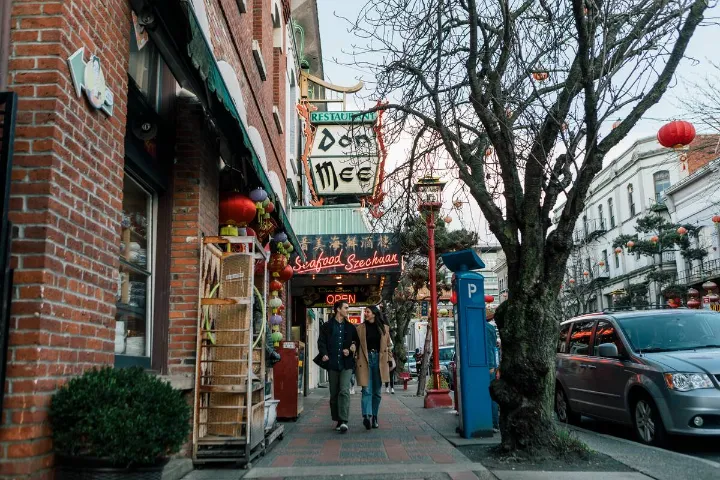
Experience Victoria’s charm with a full-day tour, including a scenic ferry ride and admission to Butchart Gardens. Book now to secure your spot on this unforgettable journey.
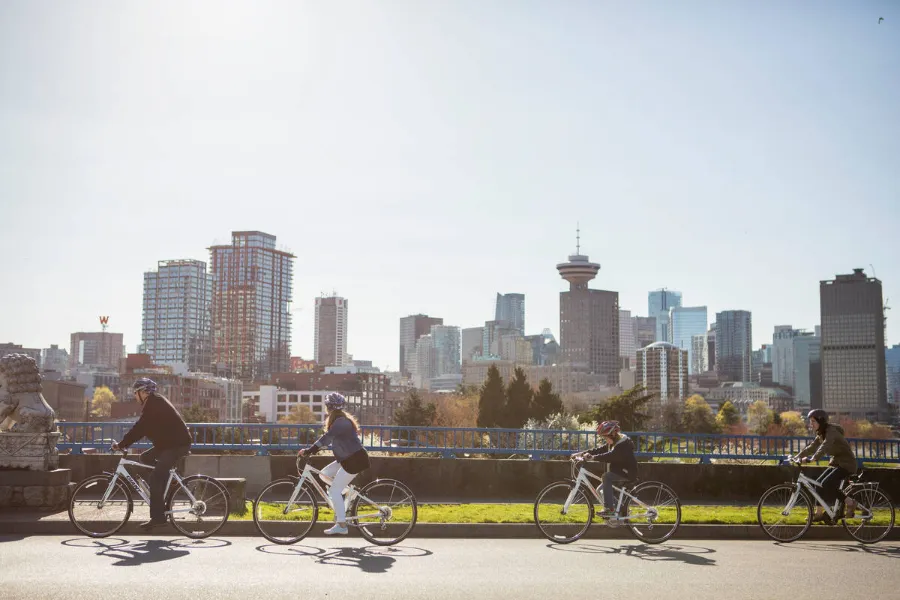
Explore Vancouver’s best in comfort and style—from the Capilano Suspension bridge to breathtaking views from Grouse Mountain. Explore the city through eyes of local guides.
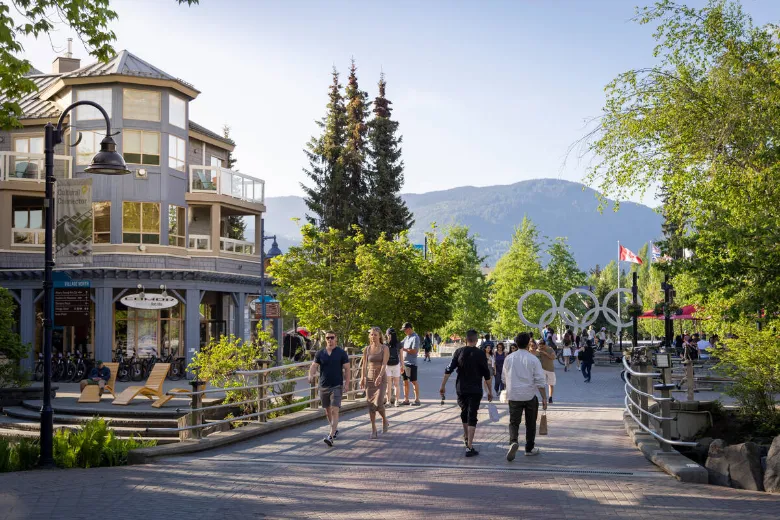
Journey into the heart of Whistler’s wilderness—ride gondolas, explore old-growth forests, and soak in alpine panoramas. Claim your spot now and make every moment unforgettable.

